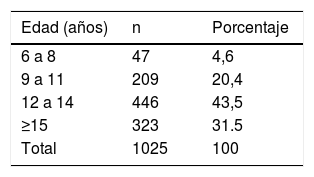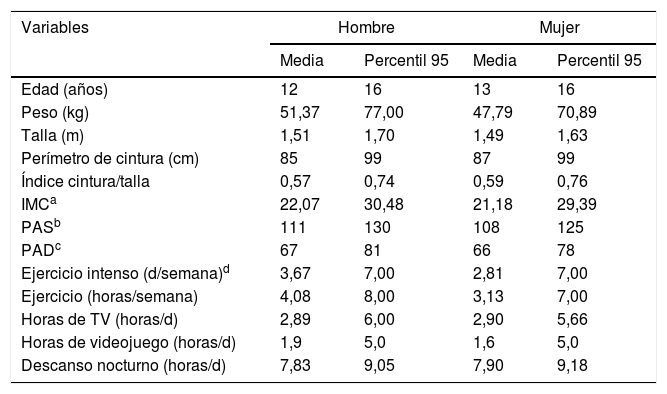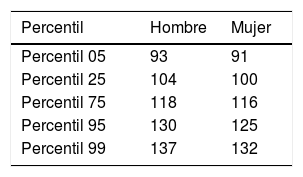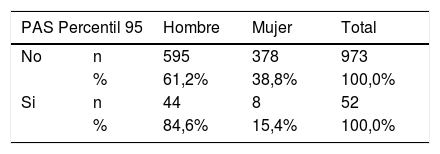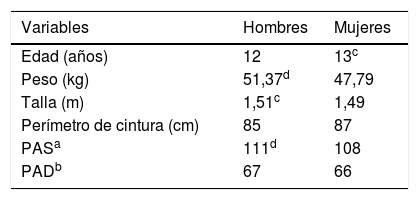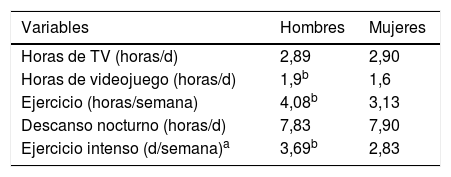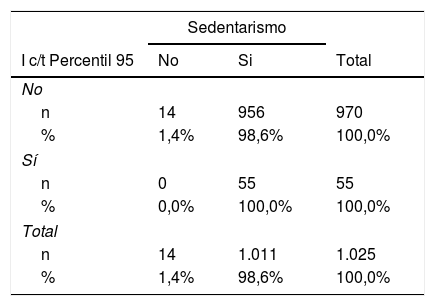La obesidad y el síndrome metabólico (SM) continúan siendo un problema a nivel socioeconómico, causando elevada morbilidad y mortalidad en la población adulta, por lo que se debería realizar una prevención de factores de riesgo desde temprana edad. En la actualidad no existe un consenso del momento oportuno para iniciar la intervención y tratamiento con respecto al SM. El objetivo del estudio es describir el fenotipo para predecir diagnóstico temprano de SM en escolares.
Materiales y métodosEstudio observacional, prospectivo, transversal y analítico en escolares de seis a 15 años, aplicado en Guayaquil. Se realizó valoración antropométrica y encuesta escrita, tras firma del consentimiento informado. Se utilizó para los cálculos de asociación la plataforma de inteligencia artificial (IA) Watson de IBM y su software Modeler Flow.
ResultadosSe examinó una población de 1.025 estudiantes entre seis y 15 años (media de 12 años para varones y 13 años para mujeres), de los cuales 62,3% fueron hombres y 37,7% mujeres. El 23,9% de la población presentó sobrepeso y 14% obesidad. Se observó una mayor tendencia a la alteración del peso en varones que en mujeres (51,37% vs. 47,79%), y menor perímetro de cintura en varones (85 cm vs. 87 cm, respectivamente). Los varones tuvieron mayor nivel de presión arterial sistólica (PAS), encontrándose dentro del percentil 90 (PAS media de 123 mmHg) un 61,2%, en comparación con un 38,8% de las mujeres, con una p < 0,001. El sedentarismo es similar en ambos grupos, con una media de 4,79 horas frente a la pantalla y/o videojuegos. Se demostró correlación estadísticamente significativa entre la presión arterial y el índice cintura /talla (I c/t) en el percentil 90 y percentil 95 (X2 9,075, p < 0,028, y X2 23,54, p < 0,000, respectivamente), así como relación entre el P95 de la presión arterial y el sexo (X2 11,57, p < 0,001). El sistema Modeler Flow, nos demostró que, si se observa un I c/t > 0,46, peso > 56,1 kg, talla > 1,61 m, y sedentarismo puro mayor a tres horas de tiempo frente a la pantalla, hay una probabilidad de presentar SM de 82,4%. El modelado matemático del árbol de decisiones (basado en inteligencia artificial) tiene una precisión predictiva del 90% (desviación de error de 0,009). La importancia de los predictores de SM, van de un 97,57% a un 100%.
ConclusionesSe observó en escolares de seis a 15 años, una prevalencia del 33,9% de SM, con puntos de corte patológicos de: I c/t ≥ 0,46, peso ≥ 56,1 kg, sedentarismo puro mayor a tres horas frente a la pantalla/videojuegos, y PAS dentro del P90 (> 123 mmHg). Con estos cuatro indicadores, podemos predecir una probabilidad de diagnóstico temprano de SM de 97% al 100%.
Obesity and metabolic syndrome (MS) continue to be a problem at a socioeconomic level, causing high morbidity and mortality in the adult population. Prevention of risk factors should be carried out from an early age. Currently, there is no consensus on the opportune moment to start an intervention or treatment, regarding metabolic syndrome. The objective of the study is to describe the phenotype to predict early diagnosis of metabolic syndrome in schoolchildren.
Material and methodsObservational, prospective, cross-sectional and analytical study in schoolchildren from 6 to 15 years old, conducted in Guayaquil. Anthropometric measurements and a survey were performed, obtaining signing informed consent. The IBM Watson artificial intelligence (AI) platform with its software Modeler Flow, were used for the analysis.
ResultsA population of 1025 students between 6 and 15 years old (mean of 12 years for men and 13 years for women) was examined, of whom 62.3% were men and 37.7% women. 23.9% of the population was overweight and 14% obese. A greater tendency to weight alteration was observed in men than in women (51.37% vs 47.79%), and a lower waist circumference in men (85 cm vs 87 cm, respectively). Males had a higher level of systolic blood pressure (SBP), being within the 90th percentile (mean SBP of 123 mmHg) 61.2%, compared to 38.8% of women, with a p < 0.001. Sedentary lifestyle is similar in both groups, with an average of 4.79 hours in front of the screen and/or video games. A statistically significant correlation was demonstrated between SBP and the waist/height ratio (WHtR) in the 90th percentile and 95th percentile (X2 9.075, p < 0.028, and X2 23,54, p < 0,000 respectively), as well as a relationship between 95th percentile and sex (X2 11.57, p < 0.001). The Modeler Flow software showed us that if WHtR, > 0.46, weight > 56.1 kg and height > 1.61 m, the probability of presenting metabolic syndrome, was of 82.4%. The statistic of this study has a predictive accuracy of 90% (error deviation of 0.009). The importance in the predictors of metabolic syndrome, range from 97.57% to 100%.
ConclusionsA prevalence of 33.9% of metabolic syndrome was observed in schoolchildren from 6 to 15 years old, with pathological cut-off points of: WHtR > 0.46, weight > 56.1 kg, pure sedentary lifestyle > 3 hours in front of the screen/playing video games, and SBP within the 90th percentile (> 123 mmHg). With these four indicators, we can predict a probability of early diagnosis of metabolic syndrome of 97% to 100%.










